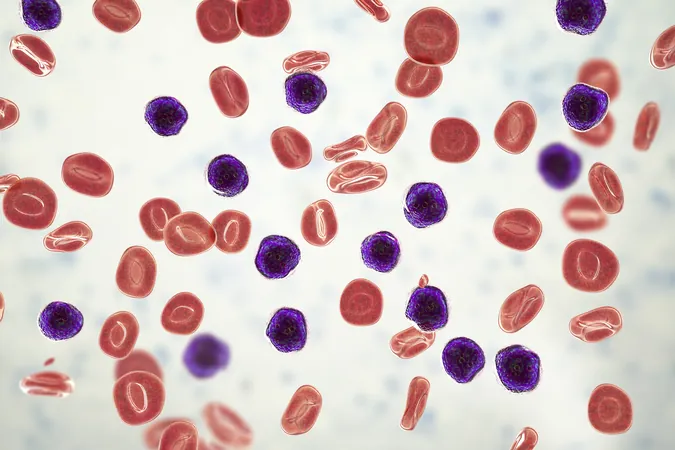
Unlocking Heart Health: How Tiny Changes Could Slash Arrhythmia Risks
2025-06-12
Author: Siti
Scientists have unveiled a groundbreaking discovery: microscopic tweaks in heart cell structures could significantly lower the risk of life-threatening irregular heartbeats, or arrhythmias.
Known medically as arrhythmias, these irregularities become increasingly common as we age, raising alarm bells for heart health. But a recent study published in the esteemed *JACC Clinical Electrophysiology* journal flips the script.
Researchers found that a minuscule gap between heart cells—dubbed the perinexus—narrows naturally with age, potentially acting as a defense mechanism to stabilize heart rhythm.
"Not all age-related changes in the heart spell disaster," asserts Steven Poelzing, a leading researcher and professor at Virginia Tech's Fralin Biomedical Research Institute. He explains that as cardiac cells enlarge over time, the body compensates by enhancing electrical communication between them.
According to Poelzing, this adaptation ensures that as we age, our hearts maintain robust communication, which appears crucial for keeping cardiovascular diseases at bay.
Arrhythmias, which manifest as disorganized, rapid, or slow electrical impulses, pose a significant global health challenge—affecting millions and elevating the risk for strokes, heart failures, and sudden cardiac events. The National Heart, Lung, and Blood Institute indicates that atrial fibrillation is the most prevalent form, currently impacting over 2 million adults in the U.S., a number projected to climb.
Delving deeper, researchers analyzed heart samples from both young and old guinea pigs. They induced a condition known as sodium channel gain of function through medication.
Findings revealed that older hearts exhibited a naturally narrower perinexus, which appeared to shield against arrhythmias. Conversely, when this space was artificially widened, older hearts rapidly developed irregular rhythms—while younger hearts remained steadfast.
As heart cells increase in size with age, they bond more tightly, bolstering electrical stability. Poelzing likens this to a home's foundation: a solid base allows the structure to withstand wear over time, while an unstable foundation jeopardizes the entire building.
From a clinical lens, Poelzing's research also sheds light on the elusive nature of detecting arrhythmias in older patients. He notes that some heart diseases are labeled "concealed" because the body's compensatory mechanisms often restore normal function before any issues can be flagged during standard tests. That's why long-term heart monitoring becomes essential to catch these hidden rhythms.
Accompanying the study, an editorial in *JACC: Clinical Electrophysiology* highlights the intricate balance between perinexus size and heart electrical activity, proposing that targeting the perinexus could unveil new strategies for preventing arrhythmias and enhancing heart health as we age.
Collaborators from both Virginia Tech and Ohio State University contributed to this pivotal research, funded by the National Heart, Lung, and Blood Institute of the National Institutes of Health.




 Brasil (PT)
Brasil (PT)
 Canada (EN)
Canada (EN)
 Chile (ES)
Chile (ES)
 Česko (CS)
Česko (CS)
 대한민국 (KO)
대한민국 (KO)
 España (ES)
España (ES)
 France (FR)
France (FR)
 Hong Kong (EN)
Hong Kong (EN)
 Italia (IT)
Italia (IT)
 日本 (JA)
日本 (JA)
 Magyarország (HU)
Magyarország (HU)
 Norge (NO)
Norge (NO)
 Polska (PL)
Polska (PL)
 Schweiz (DE)
Schweiz (DE)
 Singapore (EN)
Singapore (EN)
 Sverige (SV)
Sverige (SV)
 Suomi (FI)
Suomi (FI)
 Türkiye (TR)
Türkiye (TR)
 الإمارات العربية المتحدة (AR)
الإمارات العربية المتحدة (AR)